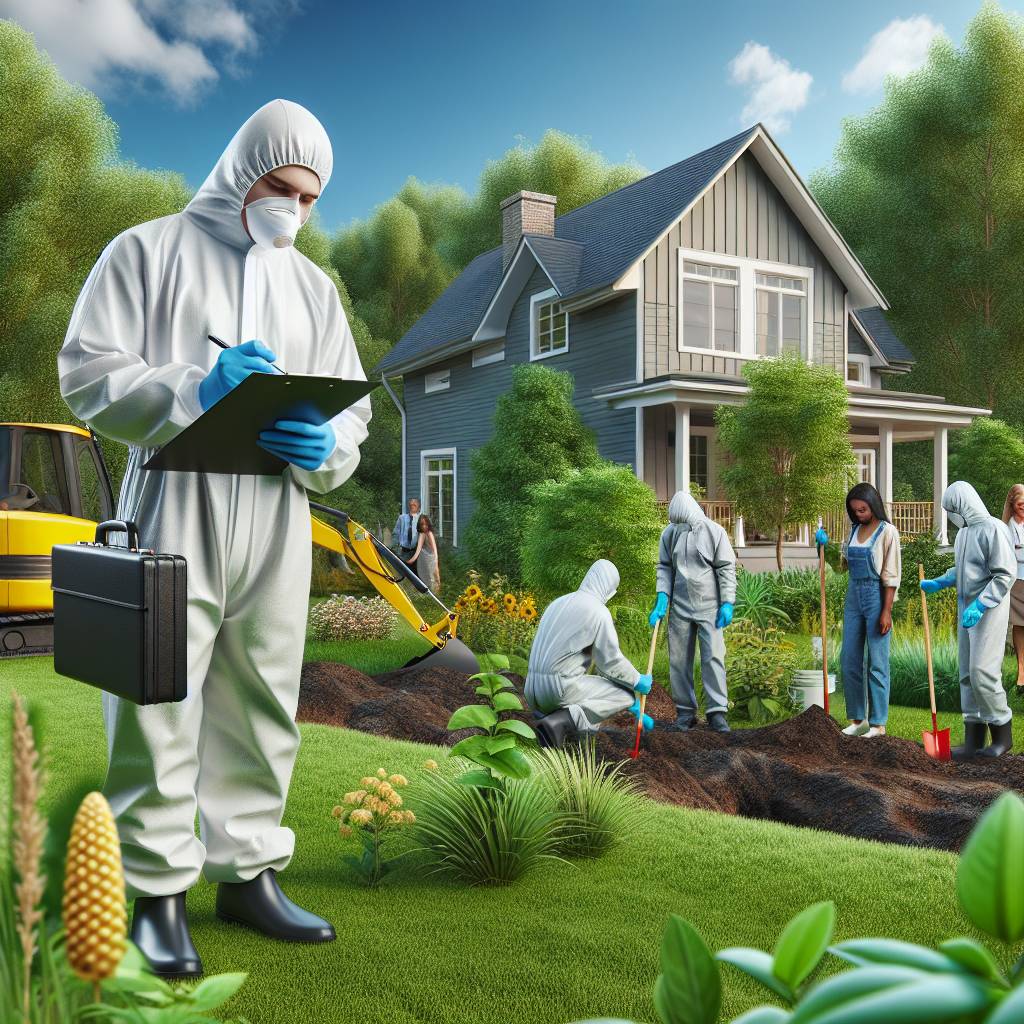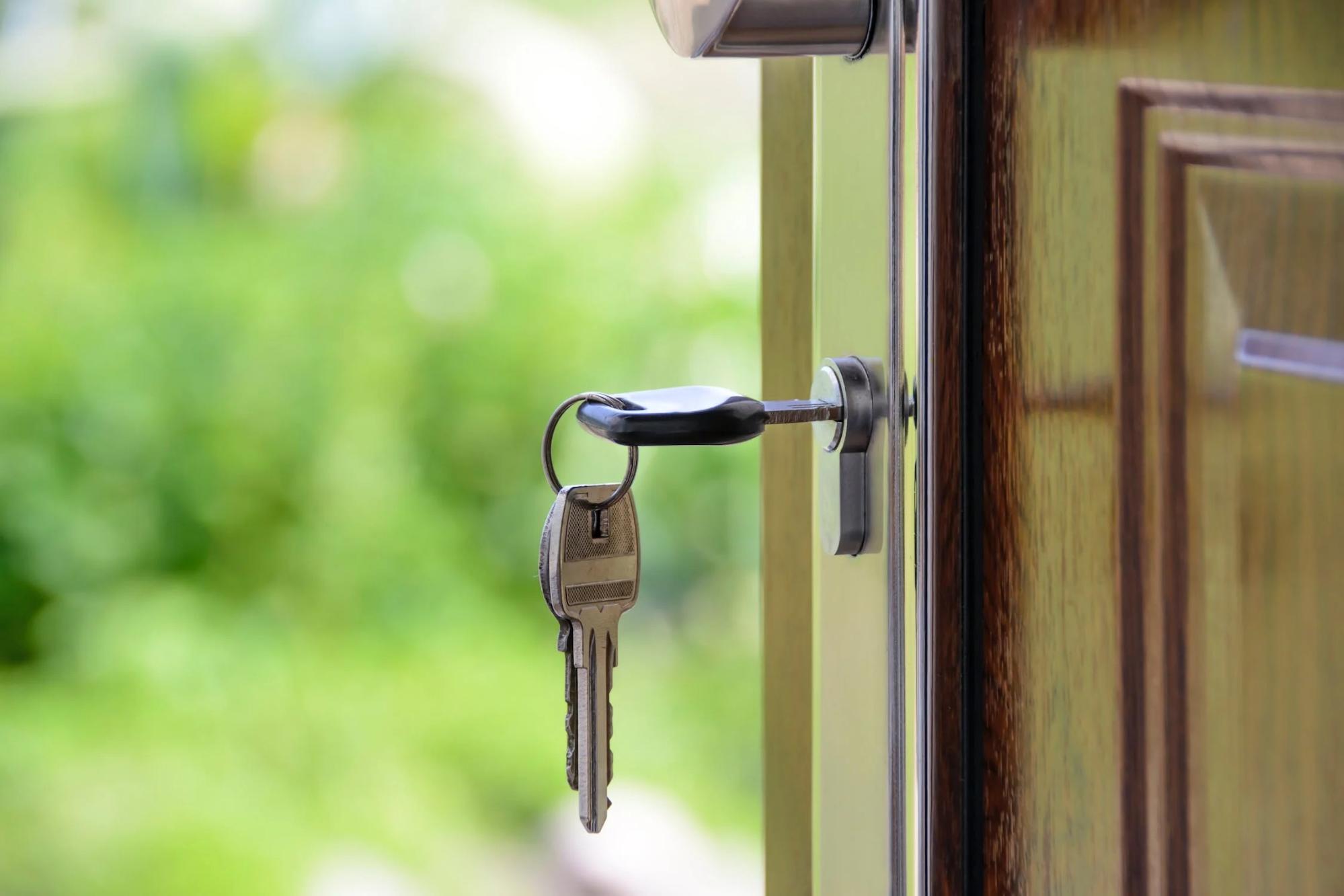Environmental inspections for properties play a crucial role in safeguarding public health and the environment. Whether you’re a property buyer, seller, or owner, understanding the significance of these inspections is paramount. These assessments evaluate potential hazards such as mold, asbestos, lead paint, and other environmental contaminants that could affect the property’s habitability and value. They ensure compliance with environmental regulations and promote sustainable practices in property management.
From their historical context to their impact on real estate transactions, community well-being, and environmental issues, we’ll explore why these evaluations are indispensable in today’s world. Understanding what to expect from an environmental inspection empowers individuals to make informed decisions about their investments while contributing to a healthier environment for all.
Key Takeaways
- Conduct regular environmental inspections for properties to ensure the safety and well-being of occupants.
- Understand the importance of environmental testing in identifying potential hazards and risks associated with a property.
- Use an environmental inspection checklist to systematically assess and address environmental concerns.
- Recognize the significance of environmental testing in real estate transactions to mitigate future liabilities and protect investments.
- Take advantage of inspection services to access comprehensive inspection packages tailored to specific property needs.
- Emphasize the role of inspections in property deals to create a safe and sustainable environment for all stakeholders involved.
Environmental Inspections Overview
Importance
Environmental inspections are essential for property safety, protecting indoor air quality and ensuring water quality assurance. These inspections play a crucial role in safeguarding the health and well-being of occupants.
Environmental inspection is vital to identify potential hazards that may pose risks to human health or the environment. It helps in maintaining a safe and healthy living or working environment by detecting any harmful substances present in the property.
By conducting an environmental home inspection, you can ensure that the indoor air quality meets acceptable standards, free from pollutants such as mold, asbestos, lead, or volatile organic compounds (VOCs). This contributes to creating a healthier living space for residents.
Water quality assurance is another critical aspect covered by environmental inspections. Through comprehensive testing methods, these assessments help ensure that drinking water is free from contaminants like heavy metals, bacteria, pesticides, or other harmful substances.
Key Elements
The process of environmental inspections involves a comprehensive examination of various aspects related to property safety and environmental health concerns. It includes identifying potential hazards through thorough testing methods such as sampling and analysis.
During an environmental inspection, professionals assess factors like indoor air quality, presence of hazardous materials like asbestos or lead-based paint, and possible contamination of soil and groundwater on the property premises.
Key elements also encompass evaluating ventilation systems within properties to mitigate issues related to poor air circulation that might contribute to indoor air pollution. By addressing these elements comprehensively during an inspection process ensures a safer environment for inhabitants.
Types of Tests
Various types of tests are available as part of environmental inspections tailored to specific needs based on the type and location of the property being assessed. These tests cover different aspects including assessing air quality both indoors and outdoors; evaluating water sources for purity; analyzing soil conditions for contamination; checking for radon gas levels; among others.
Tests conducted during an environmental home inspection are designed according to specific requirements which could include mold testing due to moisture issues within a building structure or lead paint testing in older homes where this hazard may be prevalent.
Inspections also involve examining outdoor environments surrounding properties such as gardens or recreational areas where soil contamination might be a concern due to previous land use activities.
Industry Standards
Adhering strictly to professional guidelines while conducting environmental inspections ensures high-quality assessments aimed at safeguarding public health interests.
These standards not only guide inspectors but also provide reassurance regarding compliance with regulatory requirements set forth by local authorities governing environmental protection measures.
Importance of Environmental Testing
Property Safety
Environmental inspections for properties are crucial in identifying safety hazards, ensuring a secure living environment, and mitigating potential risks. By conducting these inspections, property owners can address issues such as asbestos, lead-based paint, or other harmful materials that may pose health risks to occupants. For example, testing for lead-based paint is essential in older properties to prevent lead poisoning among children.
Furthermore, environmental testing helps identify any structural weaknesses or damage that could compromise the safety of the property’s inhabitants. This includes assessing the stability of buildings and structures to prevent accidents such as collapses or structural failures. Overall, these inspections play a vital role in safeguarding the well-being of individuals residing within the property.
Indoor Air Quality
One critical aspect of environmental inspections for properties is evaluating indoor air quality. This involves testing for pollutants and allergens to ensure healthy breathing conditions within the premises. Identifying mold spores and other contaminants through air quality assessments is imperative for preventing respiratory issues and allergies among occupants.
For instance, if high levels of radon gas are detected during an inspection, prompt measures can be taken to mitigate its presence and minimize health risks associated with prolonged exposure. By addressing ventilation concerns uncovered during an inspection, property owners can enhance airflow throughout the building—further contributing to improved indoor air quality.
Water Quality Assurance
Another key component of environmental testing revolves around water quality assurance. Through comprehensive examinations, inspectors check for harmful substances in water sources within the property premises—ensuring safe drinking water for occupants. These tests aim to identify contaminants like bacteria or chemicals that could potentially lead to health-related issues upon consumption.
For example, detecting elevated levels of heavy metals such as arsenic or mercury in well water prompts immediate action to rectify this issue and prevent adverse health effects on individuals using it as their primary source of drinking water. Ultimately, maintaining high standards of water quality through regular environmental inspections is fundamental in promoting overall occupant wellness.
Environmental Inspection Checklist
Mold Inspections
Mold inspections are crucial for detecting mold growth and spores within a property. They evaluate the potential health risks associated with mold exposure, providing essential recommendations for remediation. For example, if a property has experienced water damage or has high humidity levels, it may be more susceptible to mold growth. By conducting regular mold inspections, property owners can identify and address any issues promptly.
Furthermore, these inspections play a vital role in safeguarding the well-being of individuals who occupy the property. If left unchecked, mold can lead to various health problems such as respiratory issues and allergic reactions. Therefore, by identifying and addressing any mold-related concerns through proper inspection processes, individuals can mitigate these environmental hazards effectively.
Lead Testing
Lead testing is essential for identifying lead-based paint or materials within a property. This process ensures safety from lead exposure and protects against lead poisoning. For instance, older properties may contain lead-based paint which poses significant health risks if not properly addressed.
By implementing thorough lead testing, property owners can take proactive measures to eliminate or encapsulate any hazardous materials containing lead. This helps in preventing potential harm to occupants due to prolonged exposure to lead particles present in dust or soil around the property.
Radon Testing
Radon testing involves measuring radon gas levels within a property to prevent radon-related health risks and safeguard indoor air quality. Radon is an odorless and colorless gas that occurs naturally in soil but can seep into buildings through cracks in foundations or gaps around pipes.
Through comprehensive radon testing procedures, individuals can ensure that their indoor environments are safe from this invisible threat. By detecting elevated levels of radon early on, necessary steps can be taken to mitigate its presence effectively.
Understanding Environmental Testing
Phase I Assessment
An environmental inspection for properties involves a Phase I assessment, which aims to evaluate the site’s environmental conditions. This process helps identify potential sources of contamination and assesses the property’s overall environmental risk. For instance, if a property was previously used for industrial purposes, there might be concerns about soil or groundwater contamination from chemicals or hazardous materials.
This evaluation is crucial as it provides insight into any existing or potential environmental hazards on the property. By conducting this assessment, it becomes possible to take proactive measures to address any issues that may pose risks to human health or the environment. This information is invaluable when making informed decisions about purchasing or developing a property.
The Phase I assessment also considers historical records and interviews with current and past owners, occupants, and neighbors. These elements help create a comprehensive picture of the property’s environmental history and potential risks.
Neighborhood Report
In addition to evaluating individual properties, environmental inspections also include examining local environmental factors through a neighborhood report. This report considers various aspects such as nearby industrial sites, transportation routes (like highways), and other community activities that could impact the property’s environment.
For example, if there are factories in close proximity to a residential area being assessed for development purposes, understanding their emissions can provide critical information about air quality in that neighborhood. Furthermore, knowing whether there are landfills or waste disposal facilities nearby can shed light on potential soil or water contamination risks within the vicinity.
Significance in Real Estate
During Transactions
Environmental inspections for properties play a crucial role during real estate transactions. For both buyers and sellers, these inspections offer peace of mind by ensuring that the property meets environmental standards. This facilitates informed decision-making and helps to negotiate property transactions effectively. For instance, if an inspection reveals potential environmental risks, the buyer can use this information to renegotiate the sale price.
Buyers benefit significantly from environmental inspections as it ensures that the property meets all necessary environmental standards. By identifying any potential risks before purchase, buyers are able to protect their investment in a safe and environmentally sound property. Without these inspections, buyers may unknowingly invest in a property with hidden environmental hazards, leading to costly remediation efforts after purchase.
For Buyers
For sellers, conducting an environmental inspection demonstrates the property’s environmental integrity, which can be a powerful selling point for environmentally conscious buyers. It builds confidence in prospective buyers regarding the safety and compliance of the property with relevant regulations. By proactively addressing any identified issues or concerns prior to listing the property on the market, sellers can avoid last-minute complications during sale negotiations.
Sellers also stand to gain from conducting environmental inspections when selling their properties. By demonstrating proactive efforts towards maintaining an environmentally safe and compliant property, they instill trust and confidence in potential buyers about investing in their real estate assets.
Benefits of Inspection Services
Health Advantages
Environmental inspections for properties offer several health advantages. By identifying and addressing potential environmental hazards, these inspections promote occupant health and well-being. For example, they can detect mold growth, asbestos presence, or poor indoor air quality that may lead to respiratory issues. By reducing exposure to harmful substances such as lead-based paint or radon gas, property inspections help prevent potential health problems for occupants.
Furthermore, regular environmental inspections can play a crucial role in preventing long-term health issues associated with exposure to hazardous materials. For instance, early detection of high levels of radon gas in a property can significantly reduce the risk of lung cancer for its occupants. Therefore, by proactively identifying and mitigating environmental risks through thorough inspections, property owners contribute to creating safer living environments.
Property Value
In addition to promoting occupant health and well-being, environmental inspection services also have a significant impact on property value. Firstly, by demonstrating commitment to safety and quality through conducting regular environmental assessments and remediation efforts if necessary; property owners enhance the marketability of their properties. Prospective buyers are more likely to be attracted to properties that have undergone comprehensive environmental evaluations.
Secondly, maintaining or increasing property value is another key benefit of utilizing inspection services for properties. Properties that have a documented history of passing rigorous environmental inspections tend to retain their value over time compared to those with unknown or unaddressed environmental concerns. This assurance provides peace of mind not only for current occupants but also for future buyers who seek properties with minimal risks related to hazardous substances.
Comprehensive Inspection Packages
Mold and Lead
Mold and lead inspections are crucial for identifying indoor contaminants that can pose serious health risks. Mold growth in properties can lead to respiratory issues, allergies, and other health problems. Similarly, exposure to lead-based paint or materials can cause neurological damage, especially in children.
Inspecting a property for mold and lead involves thorough assessments of areas prone to moisture accumulation and the presence of lead-based materials. Professional inspectors utilize specialized equipment to detect mold spores and conduct tests for lead content in paints or building materials.
If left unchecked, these contaminants can compromise the safety of occupants. Therefore, a comprehensive inspection package should include thorough checks for mold growth and potential sources of lead contamination.
Radon and Moisture
Another critical aspect of environmental inspections is evaluating radon levels within a property. Radon is an invisible radioactive gas that occurs naturally from the breakdown of uranium in soil and rocks. Prolonged exposure to elevated radon levels increases the risk of lung cancer.
Conducting radon testing as part of an inspection package allows homeowners to identify any potential issues with radon buildup within their property. This proactive approach enables them to take necessary measures such as ventilation improvements or sealing foundation cracks to mitigate radon exposure effectively.
In addition to radon testing, inspecting properties for moisture-related issues is essential for preventing structural damage caused by dampness or water infiltration. Moisture assessments help identify areas susceptible to water seepage, which could result in rotting wood, deteriorating drywall, or even structural instability over time.
Ensuring Safe Property Environment
Moisture Meter Readings
Moisture meter readings are essential in environmental inspections for properties. These devices measure the moisture levels present in various building materials such as flooring and walls. By detecting excessive moisture, they help prevent mold growth, which can be harmful to both the property and its occupants. Moreover, maintaining optimal moisture levels protects against potential structural damage caused by rot or decay.
Accurate moisture meter readings play a crucial role in identifying areas that require attention during an environmental inspection. For example, if high moisture levels are detected within the walls of a property, it could indicate a leak or water intrusion issue that needs immediate remediation. Therefore, monitoring these readings is vital for ensuring the overall safety and integrity of a property.
Reliable Testing Services Utilizing accredited testing methods is paramount for obtaining accurate and trustworthy results. Reliable testing services adhere to industry standards and best practices to ensure that the inspection outcomes are reliable and credible.
Role of Inspections in Property Deals
Real Estate Impact
Environmental inspections for properties play a crucial role in the world of real estate. They directly influence the desirability and perceptions of a property, impacting real estate transactions significantly. For instance, if an inspection uncovers environmental hazards or issues, it can deter potential buyers from pursuing the purchase. This can lead to decreased property value and prolonged time on the market.
Moreover, environmental inspections also affect buyer perceptions of a property. If an inspection reveals that a property is environmentally compliant and free from contamination, it enhances its appeal to potential buyers. This positive perception can result in quicker sales at better prices.
Investment Security
. These inspections safeguard the investment value by identifying any existing or potential environmental liabilities associated with the property. By uncovering these risks early on, investors can make informed decisions about whether to proceed with their investment or not.
Furthermore, these inspections protect against unforeseen environmental liabilities that could arise after purchasing a property. For example, discovering soil contamination post-acquisition without prior knowledge could lead to substantial financial burdens for the new owner.
In addition to this protection against unforeseen liabilities, environmental inspections ensure secure real estate investments by providing comprehensive information about potential risks associated with a particular property before finalizing any deals.
Closing Thoughts
So, there you have it! Environmental inspections for properties are not just a formality but a crucial step in ensuring the safety and well-being of both the environment and the people who inhabit it. By following an environmental inspection checklist and understanding the significance of these tests in real estate deals, you can make informed decisions and safeguard your investment.
Now that you grasp the importance of environmental inspections, take proactive steps to incorporate them into your property dealings. Don’t overlook this vital aspect, as it can save you from potential hazards and financial setbacks in the future. Stay informed, stay vigilant, and ensure that your property provides a safe and healthy environment for all. Your due diligence today will pave the way for a secure and sustainable tomorrow.
Frequently Asked Questions
What is the purpose of environmental inspections for properties?
Environmental inspections assess potential hazards and risks on a property, ensuring safety and compliance with regulations. These inspections help identify issues like mold, lead paint, asbestos, or soil contamination that could affect the health of occupants or impact property value.
How can environmental testing benefit real estate transactions?
Environmental testing provides crucial information about a property’s condition, allowing buyers to make informed decisions. It helps mitigate potential liabilities and ensures that both sellers and buyers are aware of any environmental concerns before finalizing a transaction.
What does an environmental inspection checklist typically include?
An environmental inspection checklist covers various aspects such as air quality assessments, water quality tests, soil analysis, hazardous material identification, and building material evaluations. This comprehensive checklist helps inspectors systematically evaluate potential environmental risks associated with a property.
Why are comprehensive inspection packages valuable for property owners?
Comprehensive inspection packages offer a holistic assessment of a property’s environmental conditions. They provide peace of mind by identifying any hidden issues that may not be immediately apparent but could have long-term implications for the property’s safety and value.
How do environmental inspections play a role in securing safe living environments?
Environmental inspections play a critical role in ensuring that properties provide safe living environments free from harmful contaminants or hazards. By identifying and addressing potential risks proactively through inspections, homeowners can safeguard their families’ well-being.






